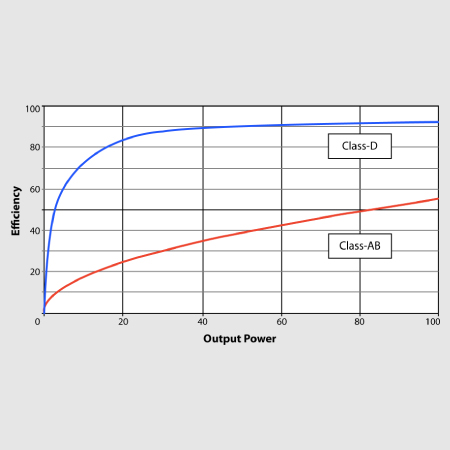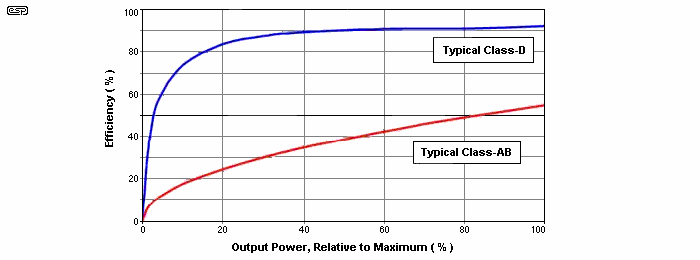class ab vs class d power consumption
If youve ever glanced at the specifications sheet for an amplifier one of the things you may have noticed is the amplifiers class. Put a good class D and Class AB beside each other with a proper setup and you will not be able to tell the difference.
I think D are just more entery efficient but dont match sound quality of AB or H amps.

. This is one of Pioneers main selling points of the SC-line of receivers. The image of the conduction angle derives from amplifying a sinusoidal signal. But a true audiophile will tell you that pure class A is the key to sonic bliss not class AB.
Maximum 80 efficiency can be achieved in radio frequency related operations. But class D is great for subwoofer amps and even in some amp it can be good. Some Class ABs claim 60 but Im doubtful on that number.
Less power consumption and lower heat generation. A Class AB should have around 60-65 efficiency with 4ohm impedance. Class C amplifier uses less than 180-degree conduction angle.
These class D seem to have massive power ratings. The difference is not huge. They typically market it as creates significantly less heat but Im wondering how much of a.
1 Review written. Listen to both and make your own decisions. Class D amps really have more in common with switching power supplies than they do with the classic class A B or AB amps.
The high power efficiency of Class D amplifiers translates into less power consumption for a given output power but more importantly it reduces heatsink requirements drastically. The Pioneer receivers in class D sound like shit. So for example is it really OK to run a speaker with max power rating of 150W with these hypex ncore amps rated.
Class AB operation allows both devices to be on at the same time like in class A but just barely. It should at least be in the 50 to 100 range. Class D amps also known as digital amplifiers work by shifting the sample frequency at which they operate up to extremely high frequencies.
The classes are based on the. I havent really compared them so I cant say for sure. Very high-power potential 400 to 500 W in a small package.
Been reading through the Class D amp reviews here and elsewhere and a point of confusion for me are the power ratings and their accuracy. They went from class AB to D. They use a series of pulses to generate the music which is then put through a lowpass filter to make it sound like music again.
Class A Class B and Class D. High efficiencygreater than 90. Class D amps are digital.
The high power efficiency of Class D amplifiers translates into less power consumption for a given output power but more importantly it reduces heatsink requirements drastically. A typical class D dissipates less at its full rated power than a class B dissipates on no-signal. Restricting class B designs to power consumption critical applications eg battery operated equipment such as 2-way radio and other communications audio.
Class A you can tell the difference between other types but it still isnt much. Pass class AB amps sounds great in class A and B. When you compare the old one with the new the old ones are more musical and even have a better 3 Dimensional stage.
The classes are based on the proportion of each input cycle conduction angle during which an amplifying device passes current. Class A amps consume a butt load of electricity and produce gobs of heat and some people swear by them. The output bias is set so that current flows in a specific output device.
4375 watts - 1094 watts 328 watts greater power consumption for the Class AB amplifier vs the Class D amplifier for the same power output. Class C amplifier is tuned amplifier which works in two different operating modes tuned or untuned. Typically denoted by a letter or two the most common amplifier classes used in consumer home audio today are Class A AB D G and H.
As you can see a Class D amplifier topology is MUCH more energy efficient especially at lower power levels where the AV receiver operates most of the time. Yes audiophiles prefer class AB over D but it is mostly superstition and not based on measurements. Class D anps are very small consumers of electricity and sound IMHO very good if properly designed.
If I remember correctly a modern Class D amplifier should have 80-85 efficiency with 4ohm impedance. Class D rules efficiency comparisons totally until you add classes G and H into the question. Power amplifier circuits output stages are classified as A B AB and C for linear designsand class D and E for switching designs.
The efficiency of Class C amplifier is much more than the A B and AB. Answer 1 of 5. Class D amplifiers are significantly more efficient than Class AB amplifiers.
Power amps have a tough job to do particularly in live sound. I would prefer the Class D because they generate less heat and require smaller heat-sink resulting in neater package. In some cases it saves almost 10 of interior.
4375 watts - 1094 watts 328 watts greater power consumption for the Class AB amplifier vs the Class D amplifier for the same power output. The bonus is efficiency. While a regular class AB amp might be 30-50 efficient a Class D amp will be 80-90 efficient - that is how much of the wall juice actually turns into music.
AB is notable worse than B at low volume defining class B as Doug Self does. These classes arent simple grading systems but descriptions of the. In doing so they use MUCH smaller power transformers which takes up far less interior spacesomething that is always at a premium in subwoofers.
A 1000 watt amplifier for instance might be called upon to deliver up to 60 volts at a current of up to 16 amps. And dont forget that 1000 watts equal to 1 kilowatt provided by an electric radiator would probably be enough to keep your. I remember D amps got knocked on for AVRS in the past for not matching up to ABH amps.
The Pioneer receivers in class D sound like shit. A Class D power supply is fine though. Lets look at some real world examples of.
Some people swear by them. Class D amplifiers can reach peak efficiencies of 90 or greater. So you get a much.
Class D amplifiers are suited for audio applications and are several orders of magnitude more efficient than traditional linear amplifiers. The problem with class A is it uses a huge amount of power compared to other types so you will not see anything larger than 50-100 watt output amps.

Class D Power Amplifier Power Electronics News
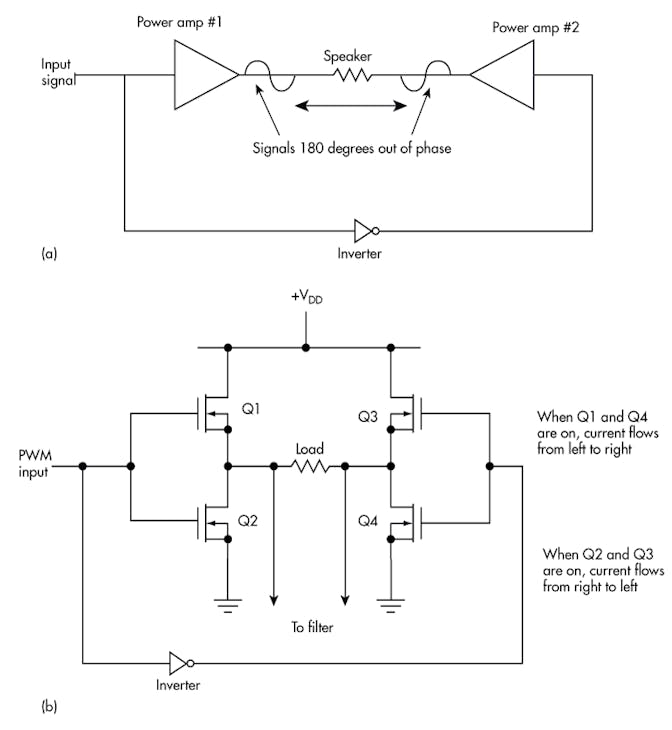
Transitioning From Class Ab To Class D In Automotive Audio Systems Electronic Design
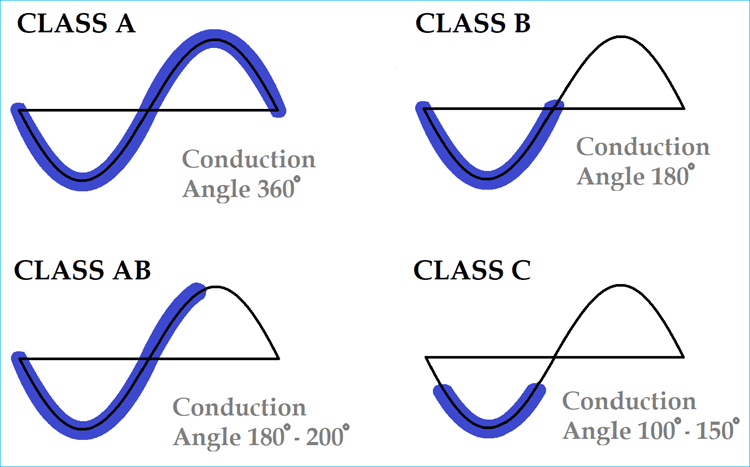
Classes Of Power Amplifiers Class A B Ab C D Amplifiers Explained

What Are The Different Types Of Audio Amplifier Classes Audioholics

Amplifier Classes And The Classification Of Amplifiers
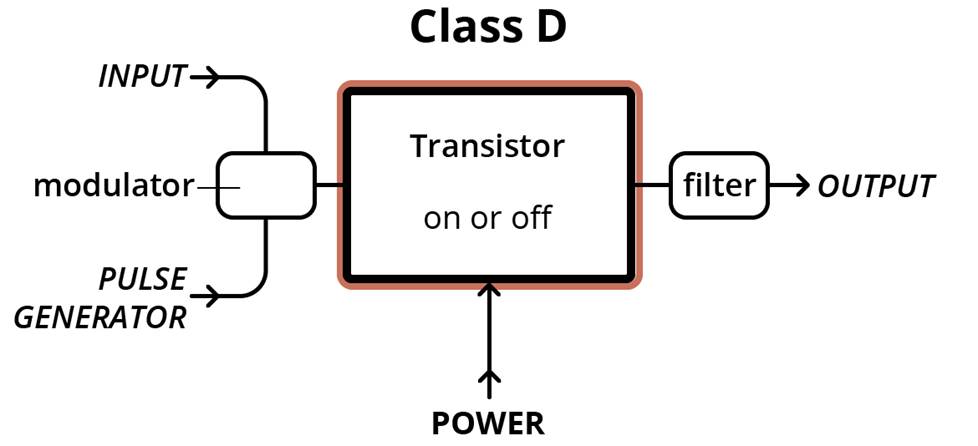
Which Amplifier Class Is The Best How Class D Amplifier Technology Differs From Class A And Ab

Class D Audio Amplifiers What Why And How Analog Devices

Class D Audio Amplifiers What Why And How Analog Devices

Amplifier Classes And The Classification Of Amplifiers
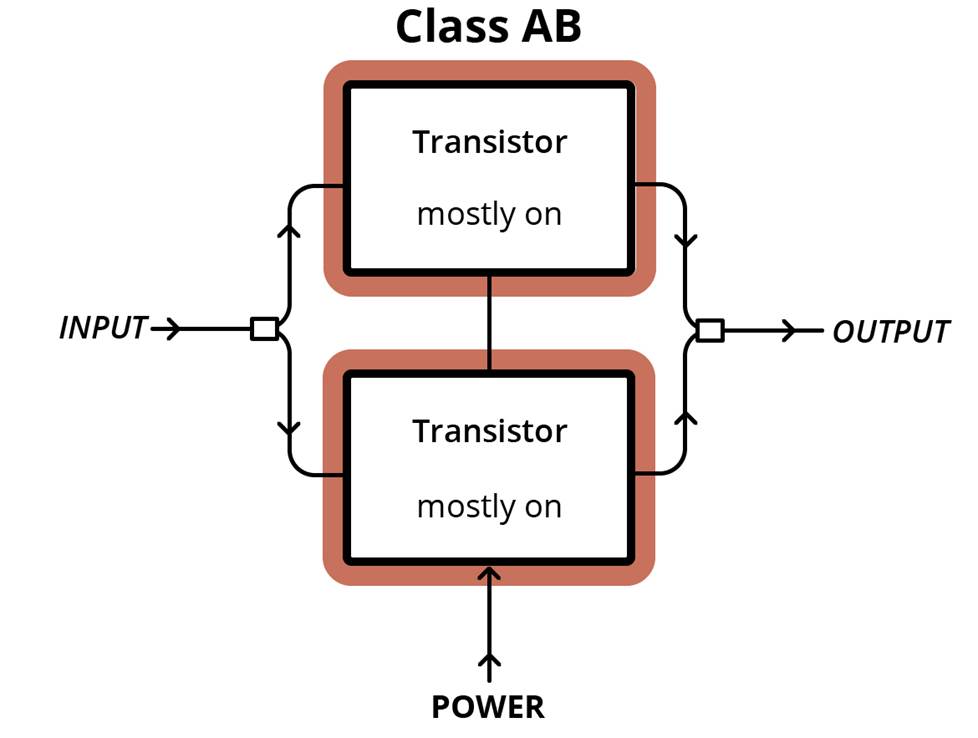
Which Amplifier Class Is The Best How Class D Amplifier Technology Differs From Class A And Ab

Amplifier Classes And The Classification Of Amplifiers

Amplifier Classes And The Classification Of Amplifiers

Amplifier Classes And The Classification Of Amplifiers

What Are The Different Types Of Audio Amplifier Classes Audioholics

Class D Audio Amplifiers What Why And How Analog Devices

Class D Power Amplifier Power Electronics News
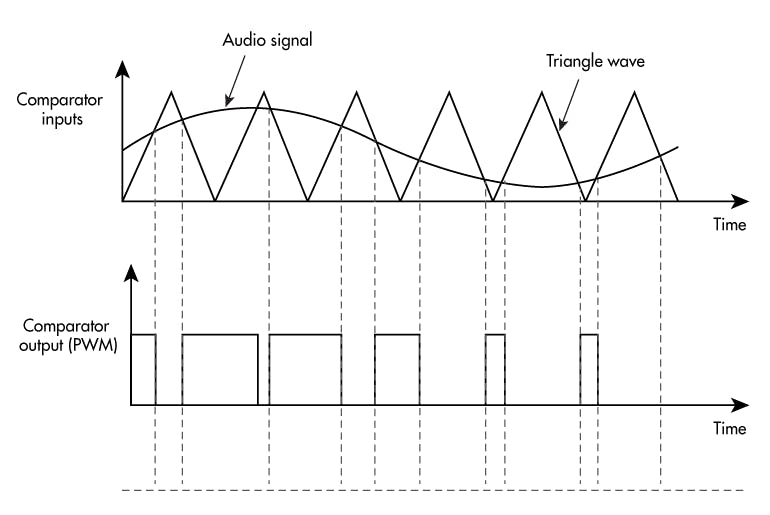
Transitioning From Class Ab To Class D In Automotive Audio Systems Electronic Design

